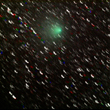 2003 Return
|
 2007 Return
|
 1995 Return
|
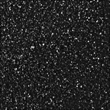 2008 Return
|
The 2003 return was a very favourable return, especially for northern hemisphere observers. Perihelion was on December 27, however on its way to perihelion, the comet passed relatively close to the Earth, reaching about magnitude 5.6 during November. At this time the comet was high in the evening sky for northern hemisphere observers, resulting in excellent views. One interesting aspect of the return was the very discordant magnitude estimates that were made, even by some very experienced observers. This was most likely caused by the very large apparent size of the coma, caused by the close approach to the Earth. Unless observers were very careful with their observations, they did not include the entire coma, resulting in erroneously faint magnitudes.
My first opportunity to observe the comet was on October 19. On this night, the comet was a very faint, star-like object at around magnitude 14. No coma was visible.
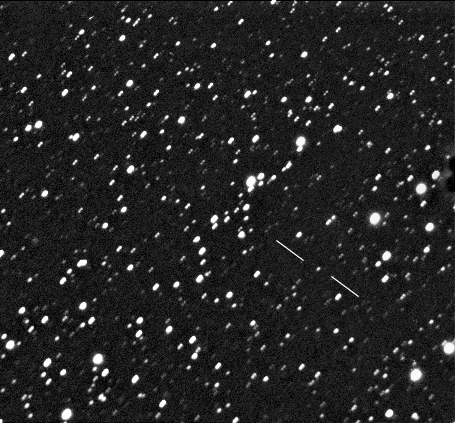
Comet 2P Encke, October 19, 2003.
Combination of 2, 2 minute images. SBIG ST-9E CCD.
8" f/6.3 schmidt-cassegrain at prime focus.
The comet was moving quite quickly, as is shown in the image below.
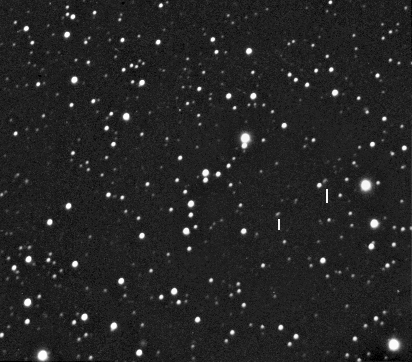
Comet 2P Encke, October 19, 2003.
Combination of 2, 2 minute images, taken 1 hour apart.
SBIG ST-9E CCD. 8" f/6.3 schmidt-cassegrain at prime focus.
By October 25, the comet was brightening steadily although it was still below magnitude 12, and was beginning to show a coma.
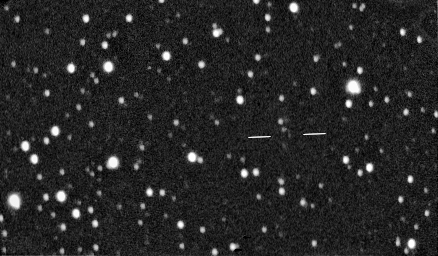
Comet 2P Encke, October 19, 2003.
3 minutes exposure. SBIG ST-9E CCD.
8" f/6.3 schmidt-cassegrain at prime focus.
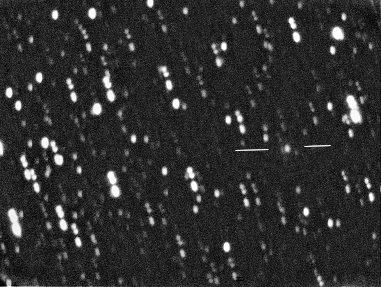
Comet 2P Encke, October 19, 2003.
Combination of 8, 3 minute exposures. SBIG ST-9E CCD.
8" f/6.3 schmidt-cassegrain at prime focus.
By mid-November, the comet had brightened by about 6 magnitudes and was displaying a very large coma surrounding a very small central condensation. A broad faint dust tail was also evident.
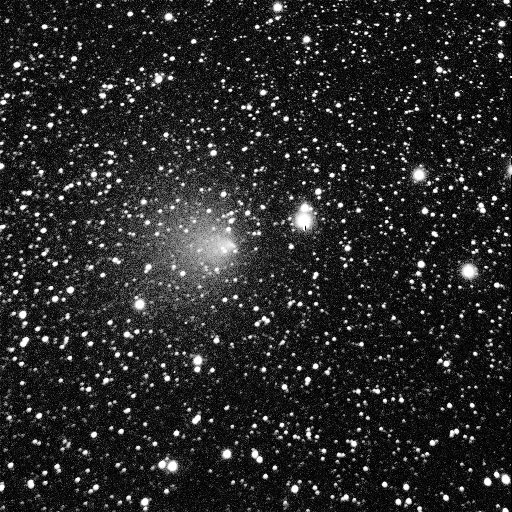
Comet 2P Encke, November 16, 2003.
2 minutes exposure. SBIG ST-9E CCD.
8" f/6.3 schmidt-cassegrain at prime focus.
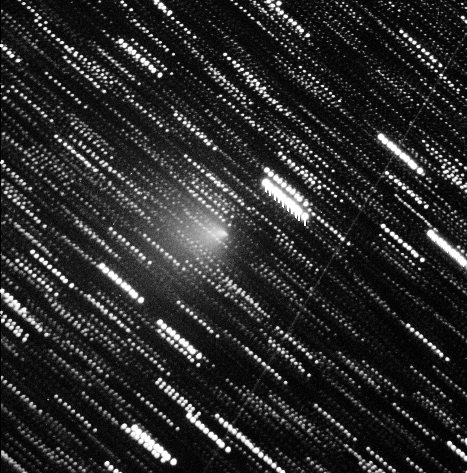
Comet 2P Encke, November 16, 2003.
Combination of 10, 2 minute exposures. SBIG ST-9E CCD.
8" f/6.3 schmidt-cassegrain at prime focus.
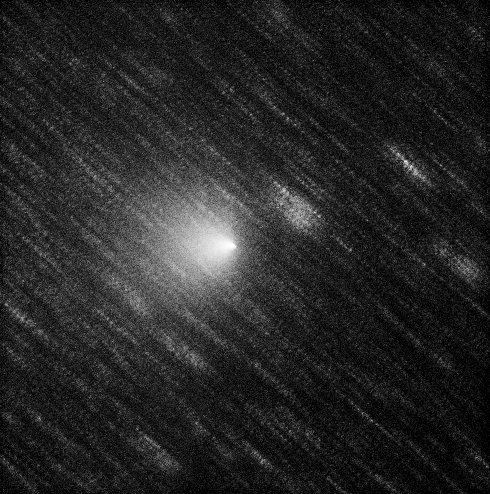
Comet 2P Encke, November 16, 2003.
This is the same images as used above, only this time the images have been combined using a median filter which minimises the stars.
The comet peaked at about magnitude 5.7 around November 20. After then, it moved rapidly southwards and towards the Sun, quickly becoming lost to northern observers. My final opportunity to observe the comet was on November 23. On this night, the comet was about magnitude 5.8 with a large coma, very small central condensation and broad, faint tail. The coma was a very strong greenish colour.
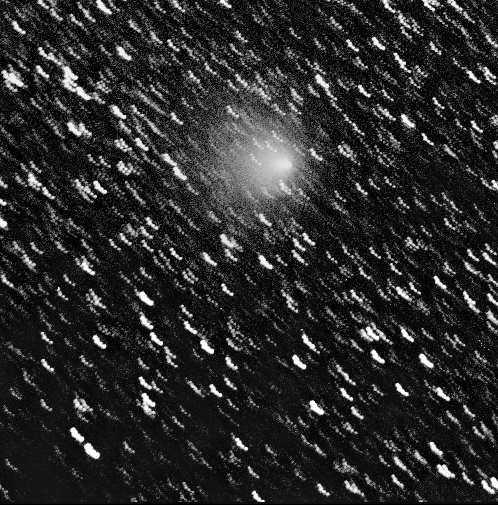
Comet 2P Encke, November 23, 2003.
Combination of 5, 1 minute exposures. SBIG ST-9E CCD.
8" f/6.3 schmidt-cassegrain at prime focus.
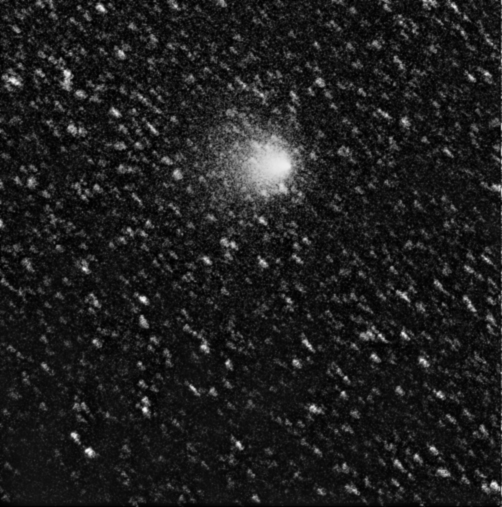
Comet 2P Encke, November 23, 2003.
The above combination of images, combined with a median filter.
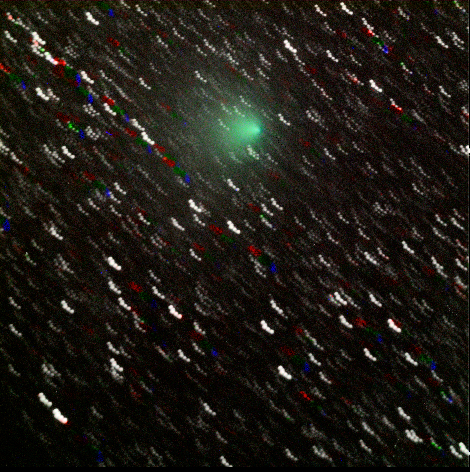
Comet 2P Encke, November 23, 2003.
Combination of 5, 1 minute exposures with a clear filter,
3, 1 minute exposures with red and green filters and 4, 1 minute exposures with a blue filter.
SBIG ST-9E CCD. 8" f/6.3 schmidt-cassegrain at prime focus.
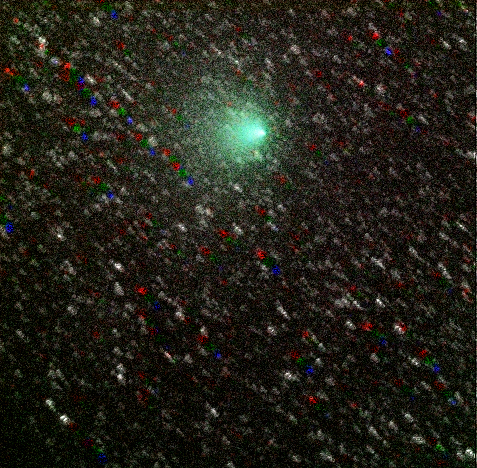
The same image as above only processed with a median filter to minimise the stars.
The 2007 return was fairly favourable for southern observers, however at this time I was busy with other observing commitments and was only able to spare the time for one observation on June 12. On that night the comet was about magnitude 10.5 with an asymmetric coma. Possibly the tail was aligned towards the Earth.
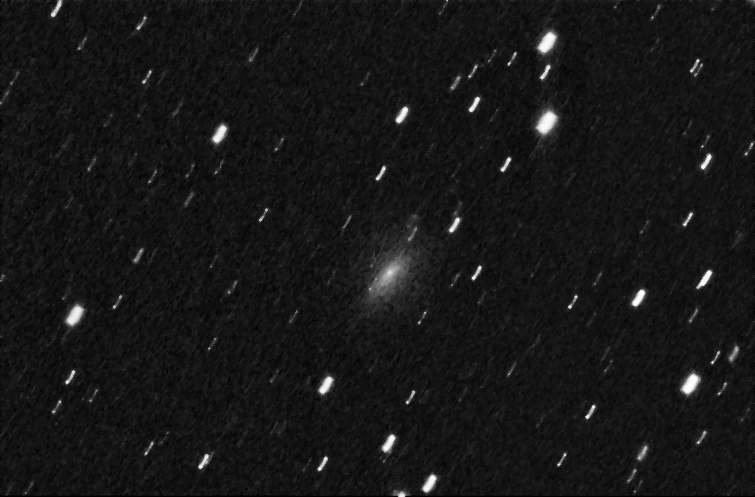
Comet 2P Encke, June 12, 2007.
Combination of 5, 3 minute exposures. SBIG ST-8XE CCD.
300mm f/6 newtonian at prime focus.







